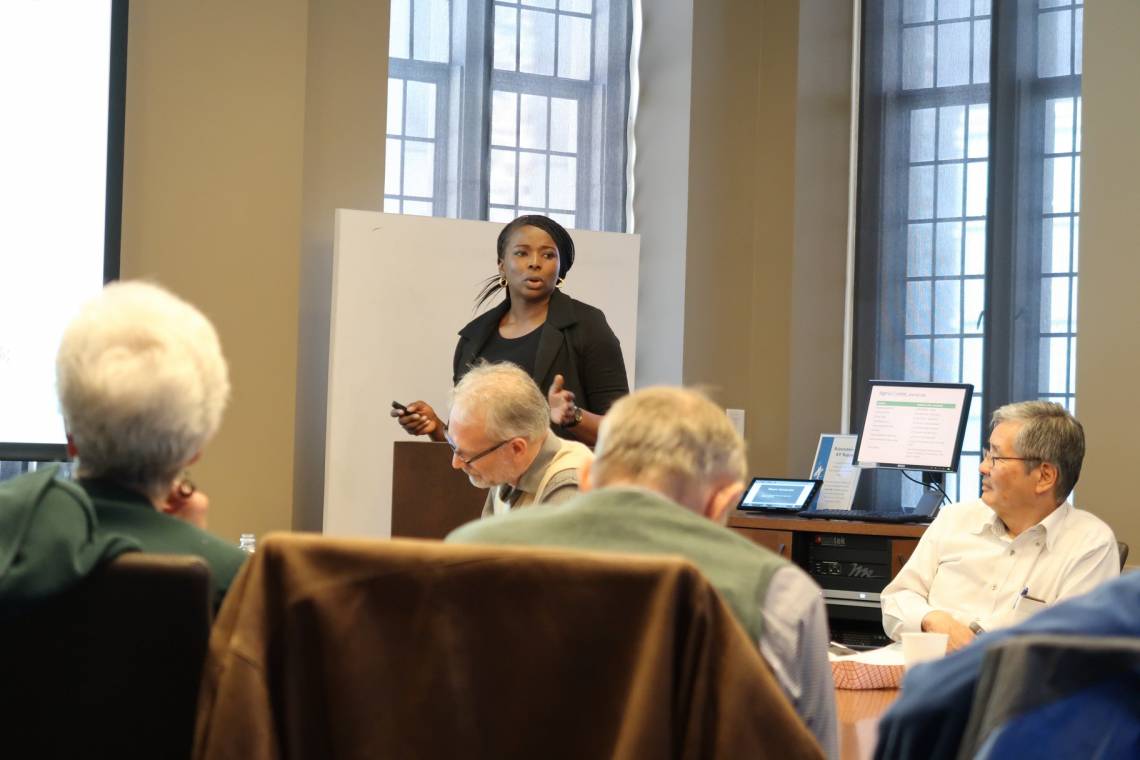Scholars: Inequality Remains in Post-Apartheid South Africa
DUCIGS event also examined inequalities in Nigeria

Has the nature and extent of inequality changed in South Africa’s post-apartheid period?
Not so much.
Inequality in South Africa remained extremely high but certain aspects of it changed during the post-apartheid period, enough to contribute to the erosion of social cohesion over the last decade.
A group of scholars who recently spoke at Duke said they found an increase in income inequality between 1993 and 2008, with a slight decline thereafter at the national level, and similar trends in income inequalities between and within racial and ethnic groups.
Surprisingly, they also found that inequalities in self-assessments of life satisfaction tended to move in an opposite direction from inequalities in terms of income during the two-sub periods. Life satisfaction inequalities between race groups fell significantly during the first decade of the post-apartheid era, and reversed the course thereafter, mirroring the movement of the level of life satisfaction of the black/African group.
The forum, “Inequalities and the Erosion of Social Cohesion in Post-Apartheid South Africa,” featured presentations by Hiroyuki Hino, a visiting research scholar at the event host, the Duke University Center for International and Global Studies (DUCIGS), and economics professor Murray Leibbrandt (University of Cape Town).
Charles Piot, a Duke professor of cultural anthropology and African and African American Studies, and Ada Umenwaliri, associate director of African Studies Center at the University of North Carolina at Chapel Hill, served as discussants.
Hino and Leibbrandt provided an overview of the complex factors that underline low levels of social cohesion in South Africa, including economic stagnation; high frequencies of social conflict; widespread, chronic poverty; low levels of interpersonal trust; and a cultural emphasis on ethnicity and race as the most important components of personal identity.
Of all of these factors, Hino and Leibbrandt pointed to inequality, identity (race and ethnicity), and trust as the three biggest factors in explaining social cohesion in this society.
They found that while interracial social interactions are limited in South Africa, it increased immediately after the end of apartheid, but declined after 2008. This may indicate that racial identities became more inclusive in the beginning of post-apartheid period, but reversed the course thereafter.
Looking to the future, Hino and Leibbrandt believe that in addition to reducing inequalities between and within racial and ethnic groups, it will be critical to foster a common citizenry and increase trust between identity groups.
By restoring trust in government, judiciary, police and other public institutions and by creating a more equal society, it should be possible to nurture more amiable race and ethnic identities and foster a common citizenry in South Africa, the scholars said.
Piot provided perspective from his time spent in Cape Town. He noted the inequalities in Cape Town “stunned” him compared to those in Togo, where he conducts his work.
Piot highlighted South Africa’s particular and complex history, including a history of land displacement and its extractive economy, as causes of low social cohesion in the country. He also noted that the Togolese society appears to be largely cohesive with little unemployment and encouraged Hino and Leibbrandt to look at cases like Togo in further considering the reasons behind South Africa’s social cohesion issues.
Umenwaliri presented on existing social inequalities in Nigeria, drawing similarities and differences between Nigeria and South Africa.
She stressed the importance of investing in and educating the large youth populations in both countries who she sees as a critical component in unlocking untapped productivity and innovation. She also noted that poverty and inequality are likely to continue if Nigeria doesn’t address rising populations, high fertility rates and low national productivity levels.